Deep Drawn Stamped Solutions for the Medical Industry
Leave a CommentGood medical devices must satisfy three categories: they achieve tight tolerances, healthcare professionals can easily use them, and they help the patient heal. High-quality equipment and tooling ensure high-quality end parts for medical applications ranging from device pumps and motors to pacemakers, defibrillators, and surgical equipment.
Benefits of Metal Stamping Over Other Metal Fabrication Processes
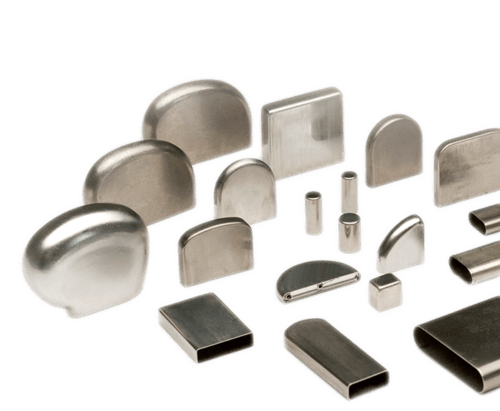
Metal Stamping Applications in the Medical Industry

One of the most significant applications for metal stamping is the creation of implantable medical device components, which must retain their shape and be easy to sterilize.
Additionally, this process provides an ideal method for fabricating customized solutions. Metal stamping contributes to an expansive range of standard and customized medical devices, such as:
- Battery cases
- Shields and half-shells
- Capacitor components
- Implantable cardioverter defibrillators
- Stamped and machined lids, covers, and headers
- Neuromodulation products
- Implantable cardiac pacemakers
- Ventricular assist devices
- Implantable drug infusion pumps
- Implantable loop recorders
- Implantable hearing devices
Hudson creates a number of products for the medical industry. A couple of our most notable offerings include:
Device Enclosures
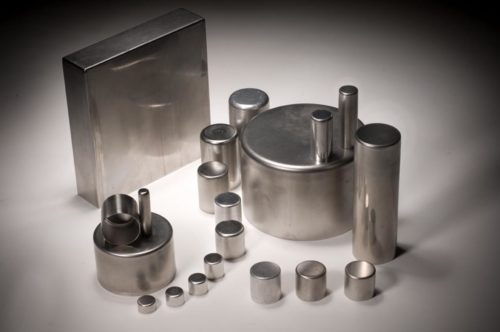
Implantable Components
Implantable components include the outer shield of the device, battery cases, and other components. By designing and building custom tooling, Hudson uses metal stamping to manufacture components for a variety of purposes affordably and quickly.
Strategies for Manufacturing Medical Components
To manufacture medical components of the highest caliber, the Hudson team uses the following practices:
Using Titanium for Medical Devices
Since the 1940s, titanium has been one of the medical industry’s preferred materials due to its ability to bind with both bone and living tissue. Titanium is incredibly strong and resistant to corrosion, making it ideal for a wide variety of medical components. At Hudson, we have experience working with titanium grades 1, 2, 4, 5, 7, 9, 11, and 23, each of which has its own unique benefits for the medical field.
Design Assistance
Due to the vital nature of the components created at Hudson, we are dedicated to working closely with our clients throughout the design process. From initial design development and prototyping into full production, our design team will work closely with you to turn your idea into reality while adhering to stringent medical industry guidelines. Metal stamping can incorporate part modifications, making the design process highly versatile. We can incorporate cleaning, embossing, and holes into all of our custom-manufactured medical components.
We place particular emphasis on creating medical components that are easily manufactured and highly reliable. To ensure these qualities, we employ:
- Failure Modes and Effects Analysis (FMEA): A thorough analysis that enables us to identify potential future failures, how serious these failures may be, and how to remedy them.
- Finite Element Analysis (FEA): This process examines the effects of physical forces (such as vibrations or heat) that may have a negative impact on the component. By looking at the component’s individual elements, we can anticipate how well the product will withstand these forces.
- RoHS Compliance: We comply with RoHS standards in order to ensure the quality of our products and the safety of our staff and clients.
High Production Run Sizes
Hudson has the capacity to produce deep-drawn prototypes, even for high-volume production runs. Thanks to the ability to automate the metal stamping process, this method is ideal for mass-producing parts.
Metal Medical Device Components from Hudson Technologies
Hudson Technologies provides industry-leading custom metal stamping for a wide range of medical applications. Founded in 1940, we perform precision metal stamping using state-of-the-art equipment, creating high-tolerance parts in large production volumes.
We design all our tooling in-house to optimize the production process. Our highly trained staff operates over 130 forming presses around the clock, working with mechanical and hydraulic presses ranging from 1-500 tons. We also use a servo press with a CNC lower cushion for special orders.
We draw our designs with reliability and manufacturability in mind, aiming to achieve the most affordable solutions through collaborative relationships with our customers. We also offer extensive modification capabilities, which allows for greater component customization. We perform in-house heat treatment as well as hydrogen and vacuum annealing to minimize lead times and optimize quality control.
To find out how our custom medical stamping services will benefit your next project, contact us or request a quote today.
Tips for Deep Drawing Stainless Steel
Leave a CommentManufacturing with stainless steel provides many of the benefits of steel without the high potential for rust and corrosion. The chemical composition of stainless steel includes at least 10.5% chromium, as well as iron, nickel, and manganese. When exposed to air, the chromium in stainless steel oxidizes, creating a protective layer that is highly resistant to moisture and corrosion. There are a wide range of stainless steel types, each categorized based on their molecular composition and structure.
 Stainless Steel Type 201/201L
Stainless Steel Type 201/201L
Stainless steel type 201 features a lower percentage of nickel than other stainless steel blends. This makes it less expensive, but also less corrosion-resistant. A higher manganese content makes stainless steel 201 stronger than other blends and allows it to retain strength and dimensional stability even in extremely cold environments. It is an excellent option for durable, inexpensive components in cold applications where exposure to corrosion is minimal.
Stainless Steel Type 316/316L
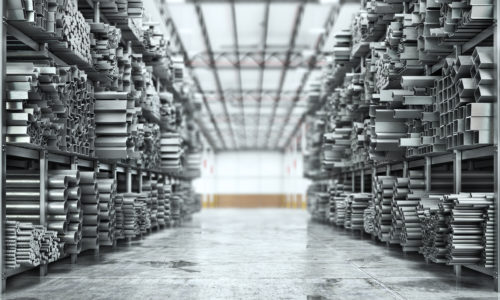
Stainless Steel Type 409
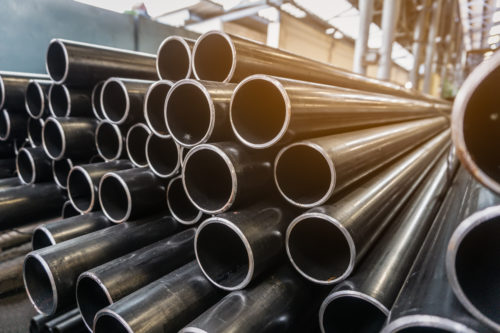
AM350 Stainless Steel Alloy
AM350 is a stainless steel alloy that contains nickel, chromium, and molybdenum. Unlike other stainless steel blends, AM350 can be heat treated to enhance formability or strength, depending on the needs of the application. Heat treatment processes used to enhance AM350 include annealing, hardening, sub-zero cooling, and double aging. Annealed AM350 exhibits a higher degree of formability, while maintaining good strength and corrosion resistance.
Alloy 20
Alloy 20 is a unique blend of nickel, iron, and chromium with a niobium stabilizer. The unique chemical composition of Alloy 20 makes it especially corrosion-resistant, particularly in the face of corrosive chemicals. Its ability to withstand extreme corrosion makes it ideal for a wide variety of harsh application environments, including:
- Chemical and petrochemical processing
- Food, beverage, and dye production
- Heat exchangers
- Explosives
- Tanks and valves
- Synthetic rubber and plastics manufacturing
- Pharmaceuticals
- SO2 scrubbers and other extreme environments
Deep Drawing Stainless Steel
Stainless steel offers a number of unique benefits over other materials, but those characteristics can make it a challenge for deep drawn metal stampings. Drawing stainless steel requires a greater level of force than other common drawing materials because it work-hardens faster. In addition, the layer of oxidized chromium that gives stainless steel its characteristic corrosion resistance also creates a higher level of friction between the steel and the die, which also contributes to a need for more force.
When performed correctly, stainless steel drawing yields products and components with high corrosion resistance, exceptional tensile strength, and superior resistance to a wide range of temperatures.
Common Components and Applications of Deep Drawn Metal Stampings
Deep drawing is a metal fabrication process that involves the use of a die and punch to create components from sheet metal. The deep drawing process is characterized by the creation of products and components that are deeper than their diameter. Repeated impacts from the punch will force the material into the shape of the die, creating durable, hollow, box-shaped or cylindrical components. Deep drawing is used to create components from a wide range of materials, including aluminum, copper, brass, steel, and stainless steel.
The primary benefit of deep drawn stamping is the speed with which the equipment can be used. This highly versatile process can be used to create a wide variety of components, from simple cylinders to intricate shapes for specialty applications. The seamless nature of deep drawn products makes them airtight and waterproof, and the compression process creates exceptionally strong components with a hardened crystalline structure.
Deep Drawn Stamping from Hudson Technologies
At Hudson Technologies, we are committed to providing the highest quality deep drawn components in the industry. For more information on our extensive portfolio of deep drawn stamping solutions, visit our Core Capabilities page or download our Turnkey Solutions eBook. To learn about ways that Hudson Technologies can help with your next project, contact us today or request a quote.






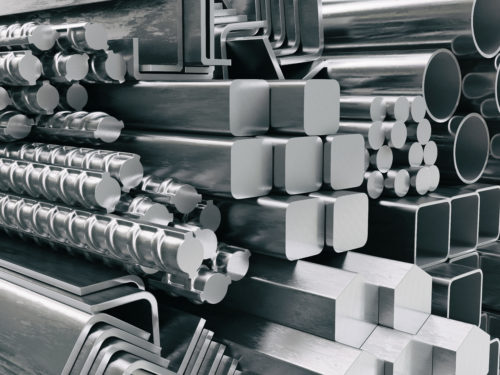 Stainless Steel Type 201/201L
Stainless Steel Type 201/201L